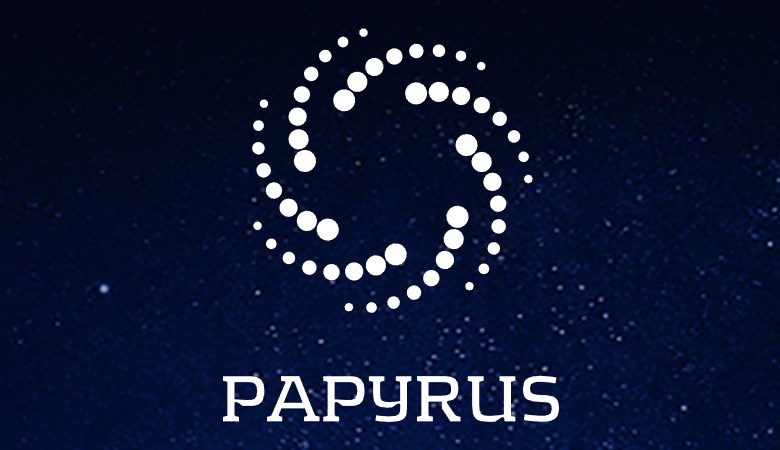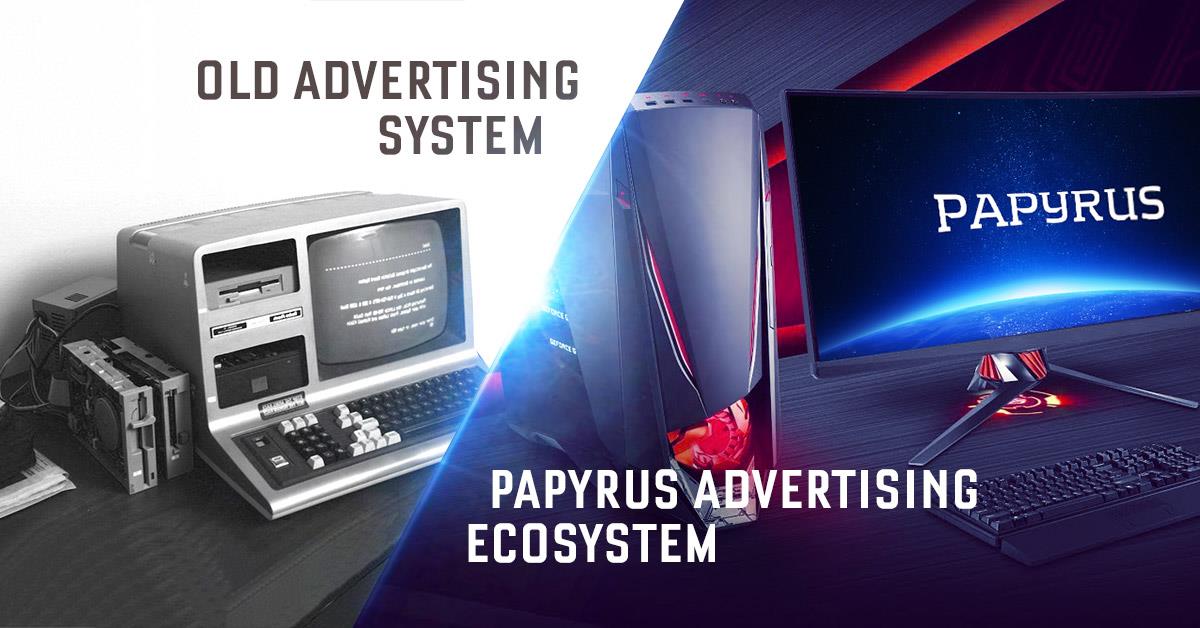Gray traffic is a real disaster for the digital advertising industry. On the market with a volume of more than $ 200 billion annually (and this amount is only growing), up to half of the money goes to botnet owners and other unscrupulous owners of Internet resources, developers, advertising agencies. The main problem of the modern advertising market on the Internet is that the advertiser receives only a limited amount of information about his campaign. Yes, an advertiser can track generally accepted indicators, such as clicks, views, time spent on a resource - this is only the tip of the iceberg, the true effectiveness of these indicators depends on their cost and quality, which cannot be traced and checked on the long-established Internet advertising market.

Any complication of the scheme for evaluating the effectiveness of advertising is still based on the above indicators. The number of transitions and / or views is a stumbling block, around which, coupled with the ratio of sales, the whole assessment of the effectiveness of an advertising campaign revolves.
Of course, for the sake of improving this very efficiency (user-to-client conversion), targeting, audience research, and other marketing tools and tools are used. However, the current Internet paradigm implies conditional privacy, impersonality of data. All the information that marketers and advertisers operate on is collected by Internet giants like Google. The latter, at the legislative level, are obliged to “depersonalize” the data during resale - it is naive to believe that you do not have a detailed dossier. Just this file has no right to leave the limits of the servers of the corporation. As a result, we get a paradoxical situation: personal data and behavioral patterns of living people are so impersonal and averaged (so that a particular person cannot be tracked by open sources) that it is not difficult for an intelligent programmer to create an army of bots that imitate the behavior of a real person on the Internet. From the point of view of the marketing and advertising department of the conditional company N, of course.
It is the “partialness” of personal data, a million intermediaries, targeting on their basis and the absence of feedback from the consumer (to make sure that at the end is not a bot, but a living person) and leads to billions of dollars in advertising budgets “into the void”.
What is gray traffic generally formed from? In the first place - this is the already mentioned botnets, which, under the guise of living people, view ads, click on the links and go to the sites. Depending on the sophistication of their creator, bots can so successfully imitate the activities of real people that you would never think that half of the clicks to your website were made by money laundering machines. Also gray traffic is organized by the ancient, like the Internet itself, by clickbate. In the classical sense, clickbate is a flashy advertisement, a headline, anything that attracts and captures the user's attention so much that it follows the link offered to it. And it turns out as a result on a completely uninteresting site. The advertising platform also removes from this “cream” in the form of additional viewing and a certain amount from the advertiser’s budget. The greatest problems gray traffic delivers the development of mobile applications. Here, unlike the web, the developers themselves do not stop earning on bots, who “wind” views in their products for the sake of earnings on advertising (especially if the application is free). Of course, advertisers and advertising platforms are trying to deal with this phenomenon, however, as in any area intersecting with information security, the final solution cannot be found: for any authentication methods based on the paradigm of impersonal data, there will always be found a trick, vulnerability, method, which these checks can be circumvented.
What does Papyrus offer?
Papyrus is a token online economy for market participants equipped with mechanisms for transparency of transactions / advertising transactions and the integration of audit service providers - and it is better than existing solutions because:
- decision making and their technological activation is accelerated many times. In Papyrus native pay-as-you-go economy, all payments for services occur in tokens and in real time. All service providers can be connected and disconnected “on the fly,” for example, creating complex consensus rules for fraud detection, using several providers for verification, and so on;
- economic prerequisites are created for market participants, which encourage them to work more efficiently and demotivate playing unfairly. So publishers who generate fraud traffic will be punished from their own Proof-of-Stake deposits of ecosystem members.
The proposed interaction scheme within the Papyrus advertising ecosystem will not only improve the quality of advertising and show its truly target audience, but the most important thing is to eradicate the very phenomenon of gray traffic.

Papyrus uses the currently popular blockchain technology. As is known, the blockchain is an end-to-end structure (an associated sequence of data blocks containing transaction records) and is completely transparent to all network participants. But just the blockchain is not enough here - the cost of maintaining it must be justified and there is no point in keeping all the logs of all transactions in it. It is simply impossible. Transparency is achieved by making payments in the form of tokens and using the blockchain to control the integrity and chronology of data on transactions placed in separate repositories - which is extremely important in the case of dealing with gray traffic.
The Papyrus project is the first of its kind for which a technological architecture has been developed, which allows to circumvent the well-known scalability problems of blockchains. The scalability of the Papyrus project will allow you to quickly and seamlessly grow to any volume that the market requires from it, processing billions of ad impressions on a daily basis. This integrated system brings together users, owners of Internet resources, advertisers and developers of decentralized applications (dApps), allowing them to interact in terms of transparency and mutual benefit.
Papyrus is built on the blockchain platform and Ethereum smart contracts, a network of state channels and a reliable decentralized data repository. The architecture consists of 4 layers, the components of each of which are developed as open source software.
Why are quick decisions on anti-fraud so important? Now the connection and integration of such a system takes a significant amount of time and effort. In addition, anti-fraud solutions are not cheap. On average, such a contract costs $ 200,000. That is, if an advertising aggregator once concluded an agreement with someone, then it will remain with this decision almost forever.
The Papyrus Ecosystem allows you to create complex consensus rules that immediately detect fraud. In fact, the site structure will push users not to break the rules and behave honestly, since the fact of fraud will simply be revealed by cross-checking from several suppliers, and the fine will be withdrawn from their own Proof-of-Stake deposits of ecosystem participants.
The most important thing that unscrupulous market players cannot hide — this is such a simple indicator as the conversion we mentioned at the beginning of the article. Conversion, for all its clumsiness, is in fact a valid indicator of the success of an advertising campaign and the quality of services provided to an advertiser by the publisher or platform. Conversion implies a cost on the part of the user, or a much more complex behavior pattern (using the advertised product) than bots are able to imitate. However, without a transparent public accounting and rating system it is impossible to physically find out how “clean” one or another market participant is.
The advertiser can only focus on the site reviews and the numbers that the publisher himself gives him. The blockchain and state channels exclude the possibility of juggling the facts: all information about advertising campaigns, conversion and user satisfaction with advertising based on feedback will be fully accessible and transparent to all participants. Papyrus will use blockchain-based identity and reputation management systems for ecosystem participants, as well as a decentralized RTB protocol that supports dApps, instantaneous mutual settlements and transparent work with programmatic advertising.
To speed the market acceptance of the new Papyrus ecosystem, it creates special open source gateways that can be easily embedded in traditional advertising systems, thus making them part of Papyrus.
Reward guaranteed
And it is obvious that service providers with low or suspicious indicators will not be able to impose the market value of their services, which will lead, at a minimum, to a balance of price and quality.
The modern digital advertising market is built by intermediaries for intermediaries: technology companies that collect data, and publishers who sell advertising services. The very same advertiser for a couple with the user remain overboard - on the side roles.
Papyrus aims to change the established order of things, expand the digital advertising market to those who are really interested in it as an effective tool, and not as an exclusively easy way to earn money and create conditions in which to protect advertisers from fraudulent traffic will grow many times over and they will receive a larger result several times for the same money spent. The economic effect will be billions of dollars on a global scale, and the Internet will become comfortable for users due to the absence of malicious and fraudulent advertising. Papyrus does not aim to get rid of or remove intermediaries in the purchase of advertising, but it will make working with them completely transparent and understandable to all market participants.
The project tokens will be available during the crowdfunding campaign to launch the Papyrus project, which will start on October 12th.
To support the idea of a big cleaning market for online advertising from cryptocurrency debris will be available on
the ICO Papyrus website from October 12. And to ask questions to the developers and the team in their
group in the Telegram - right now.